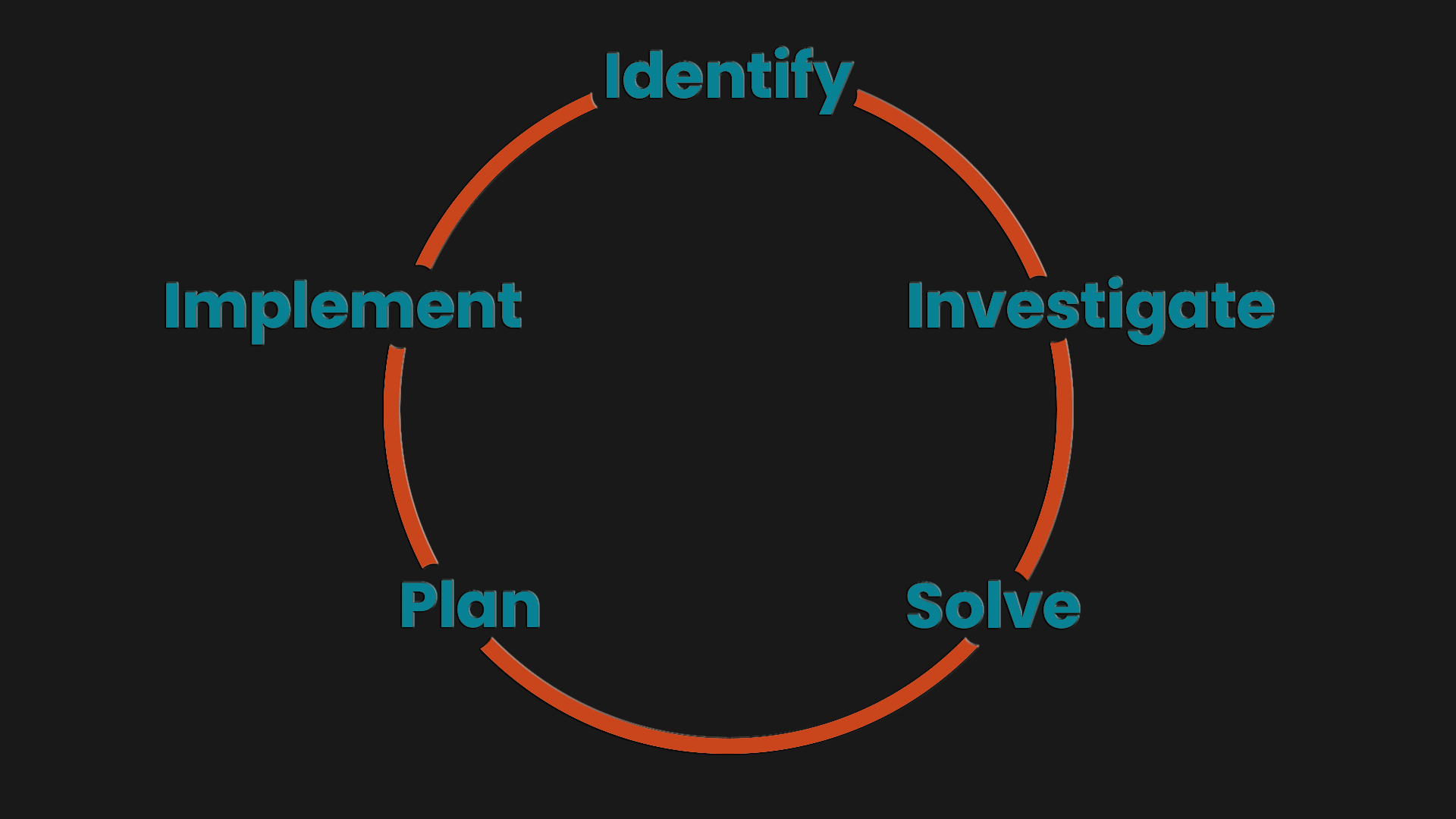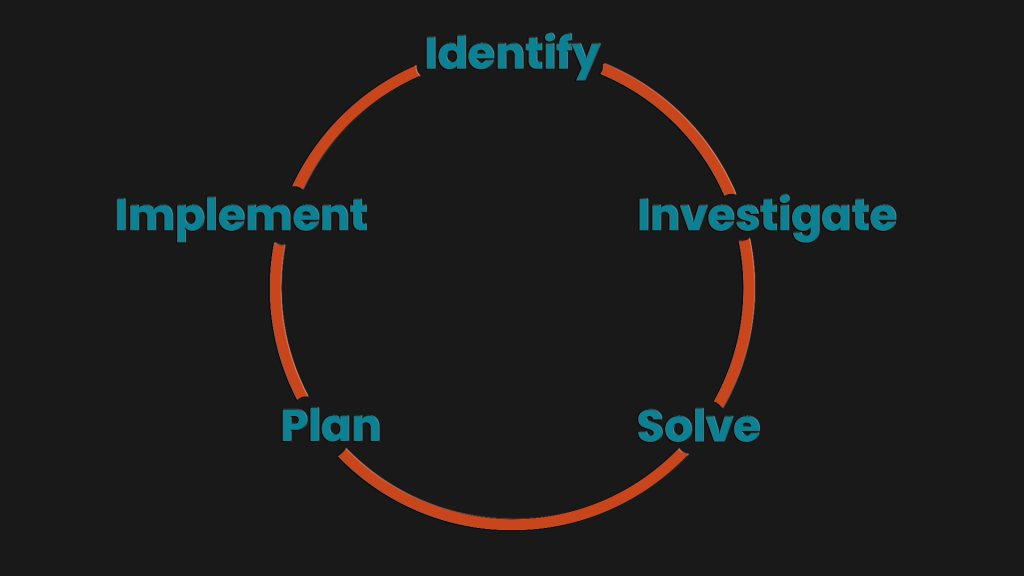
The Skill You Need That You Don't Have
Problem solving is one of the most important skills that nobody has.
“I know how to solve problems” …at least, that’s what my resume says. In practice, we all often fall short of this promise. I can show you how true that is with one question, “are you stressed?”
Stress can be caused by having too many problems and too few solutions. It’s overwhelming.
When it comes to your problem solving, does it look a bit like this?

So how do we remove the stress and become problem solver? Or, better yet, a solution finder!
Let’s relook at the diagram above, but this time we’re going to remove the stress!

Alright, let’s break it down!
Step 1. Identify
This is the step people often skip or do very poorly. Working in the IT support world, I would often hear “my computer is broken”. This is where some people would freak out, “Oh my gosh! Their computer is broken! We have to get a new one and find a way to backup all of their data and blah blah blah”
Here’s the problem, we skipped so many steps! Remember to slow down, take a deep breath, and properly identify the issue. How do we do that? Focus on defining what precisely the issue is. Let’s look at our example again:
Client: “My computer is broken!”.
Paul: “Okay, what’s going on with it?”
Client: “It just doesn’t work!!”
Paul: “What are you trying to do?”
Client: “I’m trying to print this PDF, but it won’t open”
Got it! We just narrowed down the problem. Just a few questions saved us from having to replace the entire computer!
Now that we have identified what the problem is, we need to gather more information about it.
Step 2. Investigate
Alright, the 2nd most important step, investigating!
It is so important in this phase of the process that we become curious about what is happening. Don’t lose focus and start allowing yourself to get stressed. Instead, start really asking questions. What is the scope of the issue? When did it start happening? Did anything else happen around that time?
Let’s look at our example:
Paul: “Are you able to open other PDF files?”
Client: “No, I can’t open any PDF files!”
Ooo, we just got more clues!
Paul: “When did it start happening?”
Client: “This morning. I came in and it just wasn’t working.”
We can determine a few things from this information. Either every PDF they use is corrupt, or there is a problem with the reader that they’re using.
I want to stop our investigation for a second and make sure I emphasize the importance of these first two steps with a quote from Abraham Lincoln, “If I had six hours to chop down a tree, I’d spend four sharpening my axe.” These first two steps determine your success in actually solving the problem. If you don’t properly identify and investigate the problem, then you’re using a dull axe. Sure, you can solve it, but how effective will that really be?
Oh! Guess what, it turns out in our example they don’t have a PDF reader installed.
You know what that means? Time to generate some solutions!
Step 3. Solve
Let’s figure out how to solve the problem. Here’s a secret that you need to know about this step; there is always more than one way to solve a problem. They will differ in effectiveness and practicality but remember that you are never limited to just one solution. However, if you rushed the first two steps, they will be less effective.
To our example, there are several solutions: use a different computer, never use PDFs again, or install a PDF reader.
You may laugh and say, “there is really only one option”. For the complexity of this issue, I would tend to agree. The other options are a bit silly, but remember earlier, you wanted to replace their entire computer. Depending on the degree of complexity that is involved with your issue, the more and more solutions you’ll discover.
Step 4. Plan
This step is very straightforward. “What needs to happen to get it done?”
We need to determine how and when we implement our solution. How long will it take? Is it invasive to the client? Can you do it alone?
For most issues, the sooner the better, but don’t neglect solving it properly just to do it faster. Remember to save yourself time to do it properly.
Step 5. Implement
Alright, the moment we’ve all been waiting for. Cue the Nike slogan!
This is the simplest part of the whole process. You simply do it.
Conclusion
That was a fun journey! Even though the example I used was very simple, you can apply these principles of problem solving too literally anything! Give it a try.
Also, remember that it’s okay to ask for help. Using Google or calling an expert is okay in solving problems, but don’t rely on them to solve it for you. Give yourself enough respect to solve it.
Finally, one thing that you will start to notice as you become more skilled at this is that you will inspire hope and confidence in others in your abilities. The more you can do that, the more trust and respect people will show you. You don’t have to have all the answers, or even know what you’re doing completely.
If you simply follow this process, you will be able to figure anything out, no matter what it is!
Check out NextWork’s Career Videos to learn from experts and continue growing your skillset!
